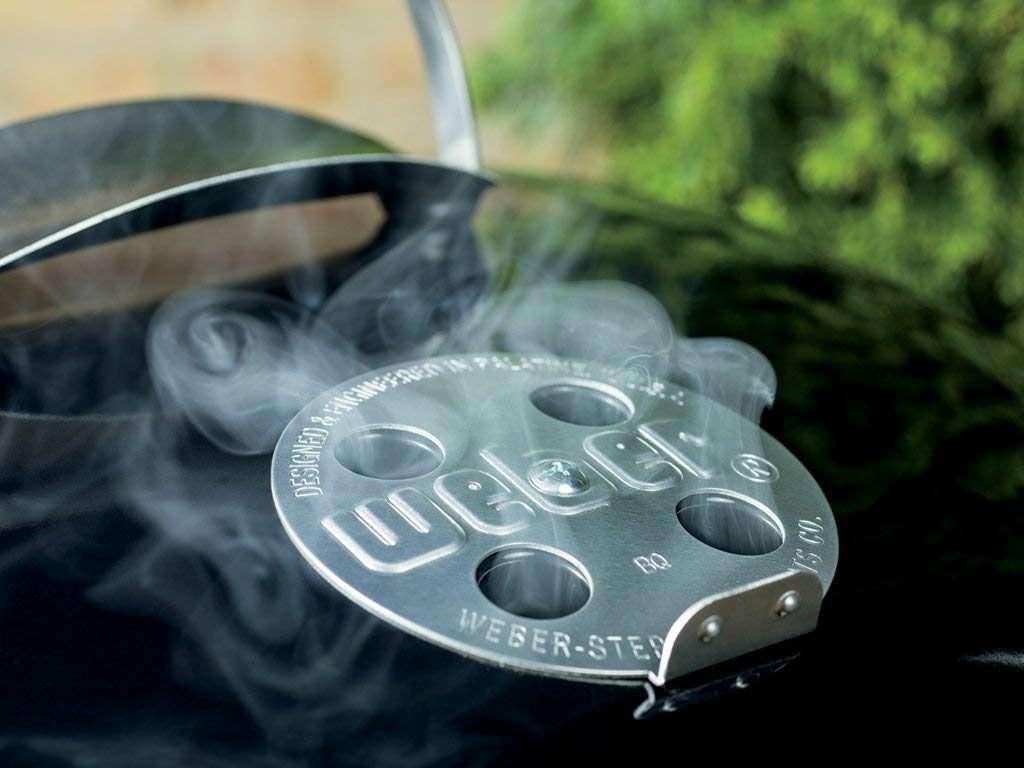
Understanding how to use your grill’s vents is key to mastering charcoal cooking. If you’ve ever struggled to keep your fire going—or worse, burned your food too fast—chances are your vents need adjusting. Let’s break down how they work and how to use them right.
“It was simple to figure out that there was a problem with the temperature. “
- Use the same amount of charcoal
- Keep the top vent open
- Use the bottom vent to regulate the temperature
Try this first without any meat to experiment and not ruin any meat.
What Do the Vents on a Charcoal Grill Do?
Your grill usually has two types of vents:
- Intake vents (bottom): These bring in oxygen, feeding your fire. More air means hotter coals.
- Exhaust vents (top): These release smoke and help airflow move through the grill.
Think of the bottom vent as your gas pedal and the top vent as your exhaust pipe. Both play a role in controlling temperature.
The Bottom vent

The bottom vent should be close to the charcoal if you use the preferred two-zone grill set up on your grill.
Its job is to provide the charcoal with oxygen that keeps the fire going.
The top vent

The top vent has a two-part job.
It has to let the gases and heat out of the grill, and by doing this, it will pull oxygen from the bottom vent to the charcoal.
A side note is that vents in a charcoal grill are also called chimneys, intake dampers, flue, exhaust, and many other things.
How I got started with finding out how to use the vents on my charcoal grill
I learned the hard way by making many mistakes and trying to adjust too fast and not taking my time to let the fire respond to my changes. Here is the best way to get started.
Starting Out: Open Both Vents
When you first light your charcoal, make sure both vents are fully open. This helps the fire and charcoal get started fast by giving it all the air it needs. Once the coals are glowing, you can start adjusting the airflow.
Read also: How to store charcoal.
Adjusting Heat with the Bottom Vent
Want to grill hot and fast? Keep the bottom vent open wide.
Need to cook low and slow? Partially close it to reduce airflow.
Try small changes. A little adjustment can make a big difference. If you shut the bottom vent too much, you’ll smother the coals.
What About the Top Vent?
The top vent should almost always stay partially open—even during long cooks. Closing it completely traps too much smoke and can make your food taste bitter.
Use the top vent to fine-tune temperature and help moisture and smoke flow properly.
I always leave the top vent open at least ¼ of the way, even for slow cooks. It keeps the smoke flowing and stops stale air from building up inside the grill.
Common Vent Mistakes
- Closing both vents: This kills the fire.
- Only using the top vent: That won’t control the temperature well by itself.
- Opening the lid too often: This messes with airflow and drops your temp fast.
Practice Makes Perfect
Every grill is a little different. Take notes while you cook—track what vent settings work best for burgers, ribs, or chicken. With some practice, you’ll learn how to control your grill like a pro.
How to Use Vents on a Charcoal Grill – My Experience
As someone who’s spent years working with different types of grills, I’ve found that vent control is one of the most overlooked skills. It’s not just about lighting the coals. It’s about managing the fire from start to finish.
When I explain this to beginners, I always say: Master your vents, and you’ll master your grill.
Do you know that by learning how to adjust the vents on a charcoal grill, you can also use your charcoal grill for smoking?
Robert Chill loves to cook on BBQs and grills and uses all types of recipes and techniques to cook some awesome food. With his experience, he can share many reviews, tips, and ideas on how to use any grill. You can read more about him here
